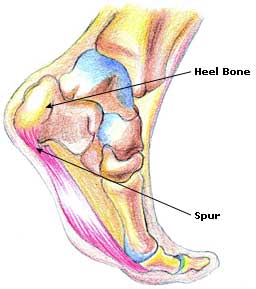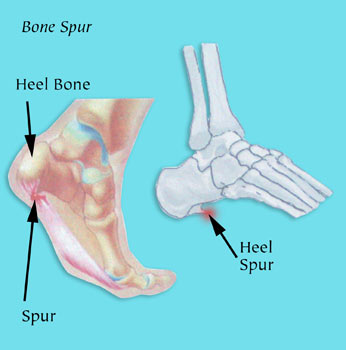What Causes Bone Spur Pain?

Bone spur pain is usually associated with a bone spur, especially one that grows into a painful spur on the tip of a bone, or into a spur that forms in an arthritic joint. Most cases of bone spur pain are mild to moderate and occur rarely.
Bone spurs (osteophytes) can form anywhere on your body where bones come together – in your wrists, ankles, knees and hips. The most common cause of bone spur pain is the joint trauma often associated with arthritis. However, some bone spurring injuries can occur in other areas of the body such as the spine or brain. Most bone spur injuries do not cause any symptoms and may go unnoticed for several years.
Bone spur pain generally occurs as localized pain
It tends to be sharp and shooting, and may be worse in warm temperatures. Bone spur pain can occur in different parts of the body. Most people who have a bone spur experience pain in the ankle, but bone spur pain can also occur in different places of the body including the knee and the spine.
Depending on where your bone spur is and how large it is, you may be able to treat the pain that occurs with over-the-counter (OTC) medications, which often have few side effects, if any. In many cases, pain associated with pain in a bone spur resolves after the spur heals or heals. However, depending on the location and size of the bone spur, treatment may be required throughout life.
If your pain is severe and persists for more than a few days, you should see a doctor and have a bone spur checked. In some cases, bone spur pain may require surgery if it becomes too large or interferes with other activities.
Pain caused by a bone spur can range from mild to moderate to severe and can be caused by a variety of reasons. Some common causes include arthritis infection of the bone spur, inflammation or tumors that stimulate bone development, and trauma to the bone spur itself.

A visit to your doctor is essential to determine what treatment you need to take for your bone spur pain
Your doctor can help you determine which type of treatment is best for your case. and recommend the best ways to avoid complications from joints and bone spurs in the future.
Don't hesitate to visit your doctor for an appointment if you have been experiencing painful bones for a long time. You may be surprised at just how quickly bone spur pain can disappear if you seek treatment and follow through with a healthy lifestyle.
If you've had bone spur pain for several years, it's a good idea to schedule a follow up appointment with a doctor. While you're waiting, do a little research online. See what other patients are saying about the doctor.
The most important thing that a doctor will tell you is that there is no cure for bone spur pain. No matter how much pain you suffer from, there is no guarantee that your bone spur will never again grow, so it is important to try and treat it as soon as possible to avoid complications in the future.
Although there isn't an exact cause for bone spur pain, there are certain things that you can do to alleviate the symptoms. such as rest and avoiding strenuous activities. Avoiding high impact sports such as running, bicycling, swimming, and jumping can be very beneficial.
Other treatments include pain relieving medications and injections. You may even be able to find information about natural cures, such as herbs and vitamins, that can help reduce your bone spur pain.